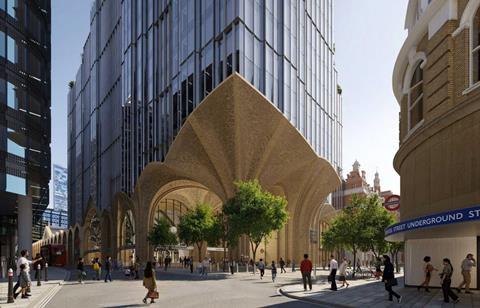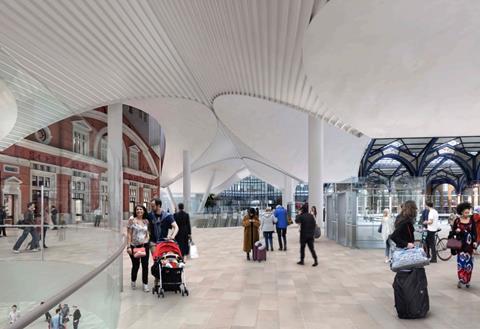But Network Rail’s Acme-designed rethink of scrapped Herzog & de Meuron scheme has already amassed nearly 2,000 objections from members of public
Historic England has said Network Rail’s revised plans for the controversial redevelopment of Liverpool Street station are a “significant improvement” over the transport operator’s previous designs for the scheme.
The government’s heritage advisor has published its assessment of new proposals for the grade II-listed station designed by Acme which replace an earlier scheme designed by Herzog & de Meuron which Network Rail scrapped last year.

While it said Acme’s £1bn plans would still cause a “great deal of harm” to the building’s historic significance, it said parts of the scheme would enable some aspects of the station to be better appreciated.
However, Historic England’s warmer response to the scheme compared to its appraisal of Herzog & de Meuron’s proposals is not reflected in the wider reaction to the application, which has already amassed nearly 2,000 objections from members of the public.
Influential campaign group Save Britain’s Heritage has also objected to Acme’s plans in the “strongest terms”, warning the redevelopment would cause “substantial harm” to the station and the setting of multiple nearby heritage assets.
Acme is proposing the construction of an 11-storey office block above the station’s trainshed as an alternative to Herzog & de Meuron’s larger £1.5bn proposal for a controversial 17-storey block which would have been cantilevered over the trainshed and the adjacent grade II*-listed Andaz hotel.
Network Rail’s rethink of the scheme comes after a significant backlash against its initial proposals, led by now-dropped development partner Sellar, which racked up a total of 2,273 objections from members of the public against just 29 letters of support.
>> See also: Sellar revising its original plans to redevelop Liverpool Street station
But that number is only slightly higher than the 1,928 objections to Acme’s proposals which have accumulated since the newer application was submitted in April. But Acme’s plans have received significantly more backing from the public, with 991 comments in favour.
Historic England said Acme’s scheme would “fundamentally alter the relationship between the station and its surrounding context”, while proposed gothic-inspired new entrances on Liverpool Street and Bishopsgate would “present an entirely new scale and aesthetic that would contrast with and dominate the surrounding street scenes”.
However, the body praised Acme’s “appropriately lofty” plans for the interior of the station, which would include a series of Victorian-style supporting structures for the over-station development.

It added the proposals “may appear more comfortably” alongside the retained historic fabric of the station’s concourse compared to Herzog & de Meuron’s proposals for a series of contemporary white-coloured arches.
And the assessment described Acme’s plans to open up interior views of the trainshed as “largely positive”, allowing visitors to “appreciate some aspects of the station’s significance more clearly”, while it said war memorials on the site would be “more sensitively presented”.
Significantly, Historic England fell short of issuing an official objection, advising the City of London’s planning committee to “only grant planning permission if persuaded that the harm has been minimised and would be outweighed by public benefits”.
But it said it believes the harm which the scheme would cause to the station can be “reduced further” and called for the City to seek amendments to the scheme.
The comments contrast sharply with Historic England’s report on Herzog & de Meuron’s proposals, which called for the application to be withdrawn, refused or “fundamentally revised”.
The City expects to make a decision on Acme’s application towards the end of this year or early in the new year.
The project team includes Aecom on engineering and transport, Certo as project manager, Newmark, previously known as Gerald Eve, on planning, Gleeds as cost manager, Donald Insall Associates on heritage and townscape, GIA on daylight and sunlight and SLA as landscape architect.























No comments yet